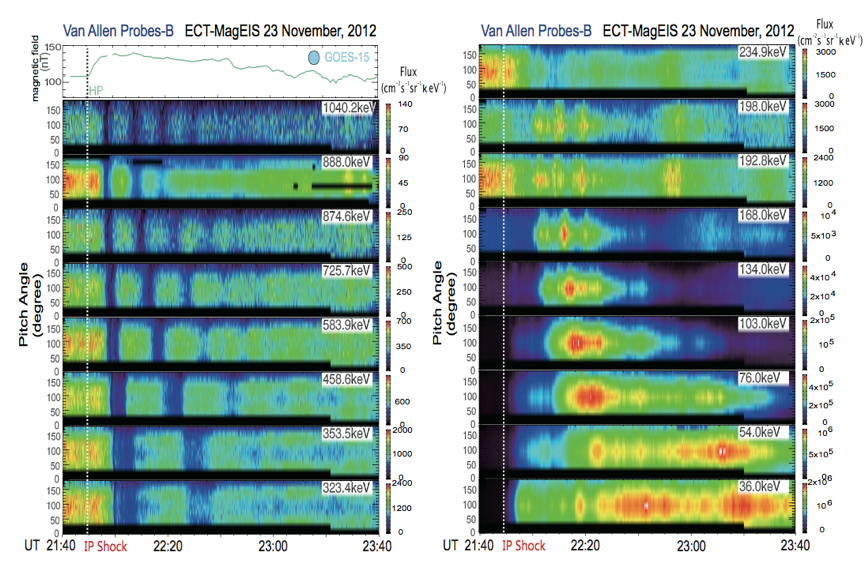辐射带相对论电子的行为,尤其是对行星际激波的响应一直是磁层物学的基本研究问题,尤其是随着范艾伦孪生探测器的升空,外辐射带动态过程成为十分热门的科学问题。在本工作中,我们利用范艾伦探测器上电子质子磁谱仪(MagEIS)与相对论电子质子望远镜(REPT),首次观测到了行星际激波撞击地球磁层时引发的新效应:相对论电子的“负”漂移回声信号。与传统意义上由能量粒子注入引发的“正”漂移回声不同,在本工作中,我们发现了行星际激波到达后外辐射带相对论电子通量有色散的突降,以及随之而来通量突降信号的漂移回声。通过进一步分析其能量色散特征,我们得出这一通量突降信号起源于昏侧半球处漂移壳上相对论电子的突然流失。而这一突然流失并非由磁层顶阴影效应或进入尾瓣开磁力线区造成。这一非对称的突然流失则揭示了激波-磁层相互作用中可能存在的晨-昏不对称因素。
该工作发表在Geophysical Research Letters 上
作者:郝以鑫,宗秋刚,周煦之,傅绥燕,R. Rankin,袁憧憬,A. T. Y. Lui, H. E. Spence, J. B. Blake, D. N. Baker 以及 G. D. Reeves
该工作得到国家重点基础研究发展计划与国家自然科学基金的支持。
(Hao. Y. X, Q. -G. Zong, X. -Z. Zhou, S. Y. Fu, R. Rankin, C. -J. Yuan, A. T. Y. Lui, H. E. Spence, J. B. Blake, D. N. Baker and G. D. Reeves (2016), Electron dropout echoes induced by interplanetary shock: Van Allen Probes observations, Geophys. Res. Lett., 42, doi:10.1002/2016GL069140.)
Abstract
On 23 November 2012, a sudden dropout of the relativistic electron flux was observed after an interplanetary shock arrival. The dropout peaks at ∼1MeV and more than 80% of the electrons disappeared from the drift shell. Van Allen twin Probes observed a sharp electron flux dropout with clear energy dispersion signatures. The repeating flux dropout and recovery signals, or "dropout echoes", constitute a new phenomenon referred to as a "drifting electron dropout" with a limited initial spatial range. The azimuthal range of the dropout is estimated to be on the duskside, from ∼1300 to 0100 LT. We conclude that the shock-induced electron dropout is not caused by the magnetopause shadowing. The dropout and consequent echoes suggest that the radial migration of relativistic electrons is induced by the strong dusk-dawn asymmetric interplanetary shock compression on the magnetosphere.



